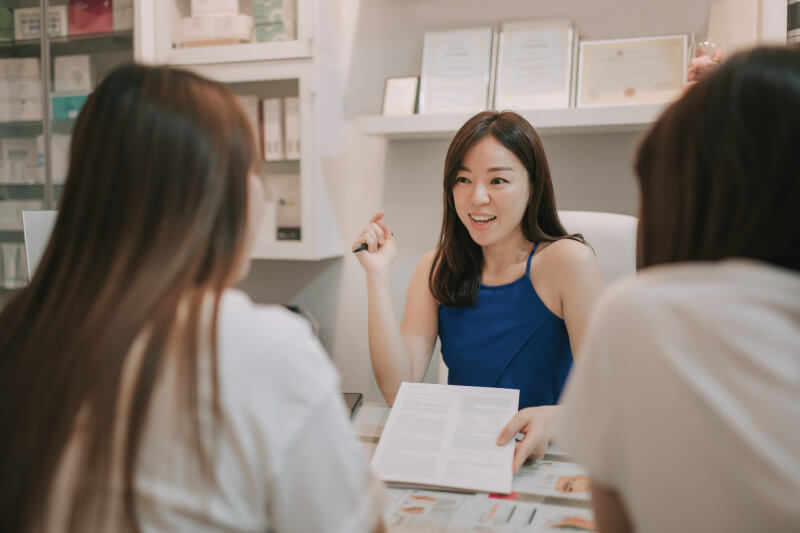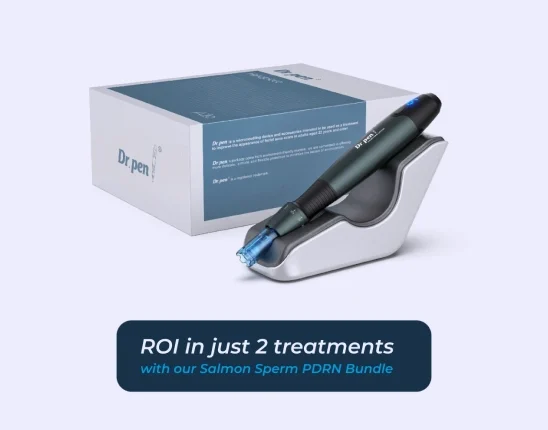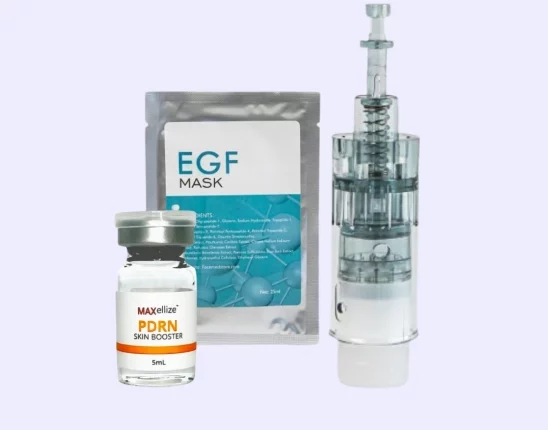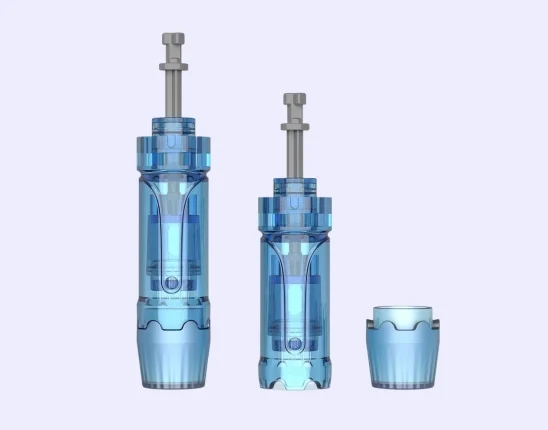Microneedles, microneedling pens, and dermal rollers have seen increased popularity as DIY cosmetic procedures that can help diminish the appearance of scars, manage hair loss, and promote smooth skin. The micro needling pen in particular has seen a lot of use, especially as at-home microneedling kits become easier to buy.
So how can users test their microneedling pen to see if it’s working well? Aside from checking the labels on the actual product packaging and following all maintenance and care instructions, keeping track of the results can be a reliable way to see if your microneedling pen is working as intended. For even better results, following the manufacturer’s advice about how to take care of their handheld device will work even better.

Get Everything You Need for Your Microneedling Pen and More at 20% off Your First Order with Code “20OFF”!
The Microneedling Pen treatment requires only the best equipment to deliver treatments and results your patients will love. Get your best Microneedling Pen equipment and more at FACE Med Store today!
You can create an account here.
The Most Reliable Way To Test A Microneedling Pen
Above all else, the best way to test and check if a microneedling pen is working as intended is by consulting the actual product info listed in the product description. Like any skin care product, a microneedling pen works best when it is used and maintained as per the manufacturer’s instructions.
However, an easy way to test a microneedling pen is to simply use it on an area of the skin (usually around the forearm) and monitor the procedure. Typically, a user should feel a warm, scratching feeling as the sterile needle causes the micro – injuries required to remove dead skin cells and manage skin laxity. If a topical anesthetic like numbing cream is used, this can be a little more difficult to examine.
Bleeding – if it at all occurs – is normal with microneedling, though it’s important to note that these are pinpoint pricks and shouldn’t bleed out long. Since a microneedling pen is only designed for surface treatments and collagen induction therapy, it shouldn’t leave deep scars or wounds usually associated with deeper treatments.
In most cases, any user’s concerns about testing or checking if their microneedling pen is working as intended should have the answers in product info or by chatting with customer support. Typically, the simple average problem that users encounter with their microneedling pen can be attributed to user error, like aggressive treatments or failing to use a sterile needle with their sessions.
The Importance Of Proper Testing And Maintenance

Testing a microneedling pen is extremely important because of how the microneedles work: while they aren’t sharp enough for deeper needle penetration, the stainless steel needles need to be sharp enough to promote skin cell turnover. While this can be different depending on your microneedling device (for example, one with adjustable needle heads) proper care and maintenance are crucial to avoid getting needle pricks.
Maximizing microneedling benefits aside, proper testing and maintenance are also crucial to ensuring that the microneedling pen is working well. As one of the skincare products that can be used at home, the user doesn’t have the proper care or experience that they can get with in-clinic microneedling. This makes at-home microneedling one of the easier cosmetic treatments for a more youthful appearance, but it also makes it crucial for users to understand how to care for their product.
Why Too Much Testing Can Backfire
While it’s fine to test a microneedling pen for any potential issues before use, the frequency of microneedling use often means that testing comes secondary to the proper care and maintenance of the pen itself. Microneedling pens will always gradually wear out and need a replacement cartridge to start working again – and it’s keeping up with this maintenance that can give better results.
Testing the needle too much (or overuse in general) can blunt the needles early, which may cause an allergic reaction, lower quality of results, or active acne breakouts. Patients with pre-existing skin concerns are even more at risk: while not like most harsh skin treatments, a microneedling tool still affects the skin barrier between the dermal and subdermal layers of the body.
In some cases, the design of the device itself can be a complication with making sure that it’s working well. For models with adjustable needle depth, replaceable roller heads, or more moving components, making sure that the replacement cartridge and any additional cartridges need to be affixed properly on the unit. If this step isn’t followed, the results of any tests can be severely compromised.
Other Ways To Keep Track If The Microneedling Pen Is Working
While keeping track of the manufacturer’s instructions is an excellent way to ensure that a microneedling pen is working as intended, it’s not the only way that a user can monitor the performance of their product. Here are several ways to check on the state of a microneedling device:
Heat Levels During Use
As a small handheld device, a microneedling pen shouldn’t overheat itself even with frequent use. Overheating is usually the clearest sign that something has gone wrong with the inner mechanisms, and the product is likely either defective or has worn out its internal components.
Under no circumstances should a user keep trying to use an overheating microneedling pen, since the risk of injury or other adverse reactions can cause a serious complication. If the product is still under warranty, the unit should be returned: if not, it should be replaced.
Pain During Use
Since microneedling pens use extensive needles to activate the collagen production of the skin, some discomfort is to be expected as the needles penetrate the top layer. However, there should never be any serious pain felt during a microneedling session – at most, the user should feel pinpricks as the needles punch into the uppermost layer of the skin.
Experiencing pain during microneedling sessions can be a sign that the needle head needs to be replaced, or (for the case of models that have adjustable needle depth) the settings need to be fixed. Aggressive treatment and use of a microneedling pen are generally not advised on account of the potential infection that can arise with extensive micro-tears in the skin.
Subpar Results
The results from microneedling take some time to show, but the results themselves are quite noticeable especially with consistent microneedling sessions. If the results of the patient are subpar, it’s immediately apparent when compared to their appearance when they first started using it.
In fact, because the needles of a microneedling pen open up the skin, a malfunctioning microneedling pen is more likely to cause adverse reactions like scarring, acne breakouts, and other similar skin conditions. If a user’s skin gets worse after trying a microneedling pen, it’s either they’re not using it properly or there’s something wrong with the pen itself.
Excessive Bleeding
Excessive bleeding by itself can be a slight issue with in-clinic microneedling sessions where deeper needle penetration usually happens, but they’re a cause for alarm with at-home kits. While microneedling injuries are never serious, it’s the complications from them that need more attention. Excessive bleeding can be a sign that the skin has broken too deep or in several places, which means extra care is needed after the procedure.
However, excessive bleeding can also be a sign of a pre-existing skin condition, so users need to be careful about attributing any bleeding that they get immediately to the microneedling pen. Proper use and handling are also crucial to making sure that they avoid any untoward incidents or adverse reactions with their microneedling procedure.
Any Deviation From Usual Performance Or Routine
Like any device, a well-kept and maintained microneedling pen will generally function without issue both with operation and results. But factors like time, wear and tear, and even the device itself can all contribute to its degradation, which can be less noticeable than the device actually breaking or malfunctioning.
A user needs to pay close attention to their microneedling pen before and after use to make sure that all components are working properly. Proper care and maintenance may differ from model to model, but the overall attitude and awareness that comes with maintaining a skin care product remain the same.
Paying attention to these details can significantly extend the lifespan of a microneedling pen, and allow users to catch any potential defects or malfunctions way before they happen. As always, the best course of action is to still pay attention to the information listed in the product description: or failing that, consulting the manufacturer’s website for proper care and maintenance tips.
An Alternative To Microneedling: PEP Growth Factor Products
Microneedling can offer patients plenty of help with managing issues like acne scars and uneven skin tone, but the benefits of microneedling can only go so far without a little bit of help. PEP Growth Factor products can help with their microneedling routines, with the additional benefit of working on all patients regardless of their skin type or if they have sensitive skin.
PEP Growth Factor products are a proprietary mix of fibroblast growth factor and copper peptides, with additional nutrients that the body needs for healthier skin. It’s particularly effective for hair growth since it can improve the appearance of hair density and allow for improvements in scalp health. This can be useful to a patient with a skin condition like alopecia, or to anyone who wants added hair growth.
PEP Growth Factor products can also work with microneedling sessions since it doesn’t interfere with how microneedling treatments work. Since collagen production also boosts skin health, the microneedling procedure and PEP Growth Factor products can be powerful tools in boosting the production of collagen.
Buy High-Quality Medical Tools And Supplies From FACE Medical Supply Today
-
 Dr. Pen A20 Replacement Needles
Dr. Pen A20 Replacement Needles -
 Dr. Pen A20 – FDA CLEARED – professional grade
Dr. Pen A20 – FDA CLEARED – professional grade -
 Dr. Pen M8 Replacement Needles – Bag of 10 PLUS 10 Maxellize PDRN Skin Booster and 10 EGF masks
Dr. Pen M8 Replacement Needles – Bag of 10 PLUS 10 Maxellize PDRN Skin Booster and 10 EGF masks -
 Dr. Pen A9 Ultima Pro Microneedling Pen Plus 5-Maxellize PDRN Skin Booster and 10 EGF Masks
Dr. Pen A9 Ultima Pro Microneedling Pen Plus 5-Maxellize PDRN Skin Booster and 10 EGF Masks -
 Microneedling Pen 2.0 Replacement Kit bundled with Maxellize PDRN Skin Booster
Microneedling Pen 2.0 Replacement Kit bundled with Maxellize PDRN Skin Booster -
 Dr. Pen A9 Replacement Needles – Bag of 10- 18 Pin Needles
Dr. Pen A9 Replacement Needles – Bag of 10- 18 Pin Needles -
 TinySoft – NanoSoft Microneedles – 34g – 3 pin – box of 30
TinySoft – NanoSoft Microneedles – 34g – 3 pin – box of 30 -
 Dr. Pen A7 replacement needles – 12 pin – 10 Pack
Dr. Pen A7 replacement needles – 12 pin – 10 Pack -
 Dr. Pen M8 plus 10-16 pin needles
Dr. Pen M8 plus 10-16 pin needles
Testing a microneedling pen should always be conducted at regular intervals to make sure that the microneedling treatment goes well, but this care should also extend to all the microneedling tools used in the procedure. Proper maintenance, testing, and repair for microneedling devices are necessary for the best results from this cosmetic procedure, and for the tool to continue giving the best results.
FACE Med Store has extensive experience with microneedling tools and other cosmetic devices used for skin rejuvenation treatments as a long-time supplier, such as our Dr. Pen A7 Microneedling Pen With 10 Needles. As a consistent trading partner for all our clients, we make sure that they get the tools that they need at competitive prices, allowing them to maintain a business without worrying about their bottom line.
For more information about us and our stocks, contact us today.














